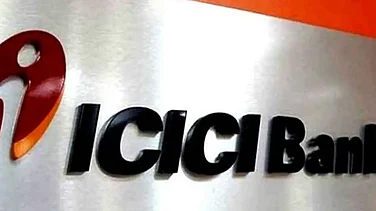Mumbai, December 12: The Centre has found itself in a catch 22 situation with respect to Goods & Services Tax (GST) revenue not picking up as per its expectation. As per the information shared in the parliament, the centre’s annual targeted revenues from GST may face a shortfall of 40 per cent. In this backdrop, the 38th GST Council meeting on next week (December 18th) is very crucial as there may be not only hike in the tax rates but also significant overhaul with respect to tax slabs and bring more goods and services under the GST net, which have been exempted so far.
GST Shortfall: Govt In A Catch 22 Situation, May Go With 3 Tax Slabs

GST Shortfall: Govt In A Catch 22 Situation, May Go With 3 Tax Slabs
GST Shortfall: Govt In A Catch 22 Situation, May Go With 3 Tax Slabs
According to informed sources in the accounting fraternity, to augment the revenue, there are strong feelers that the GST council may double the current basic rate of 5 per cent GST to 10 per cent. Further the second rate of 12 per cent may be abolished and many of the items in the 12 per cent slab will be moved to 18 per cent slab. Hence there will only be 3 tax slabs.
The increase in GST rates may spur the revenue for the authorities, however it will lead to increase in prices of basic necessities as many of the items in 5 per cent and 12 per cent slab are items of daily consumptions like medicines, frozen vegetables, paneer, cereals, flour, bread and services like outdoor catering, restaurants, hotel rooms etc. Further there are recommendations to remove the exemptions on specified goods and services like healthcare in expensive private hospital, residential lease by companies etc. to ensure more coverage.
The move is expected to have far reaching impact on major economic indicators and stock market measures too, said experts.
Niraj Bagri, Partner, Dhruva Advisors, said, “The lacklustre GST collections have created pressure for the government to look at avenues for augmenting resources. The current effective rate of 11.6 per cent is far lower than the revenue neutral rate of 15-15.5 per cent. Whilst several measures to curb the tax evasion like invoice matching, e-invoicing are on anvil, it seems that the government believes the same may not be sufficient to bridge the revenue gap. After introduction of GST, tax rates on several goods and services were brought down. Since the current collection rates are not sufficient to even meet the revenue neutral rate let alone accounting for promised return of 14 per cent to States on year on year basis, the choices available with the government are limited. ”
Parag Mehta, Partner – Indirect Tax, NA Shah Associates, said, “The burden on the common man is bound to increase as the ultimate rise in costs of goods and services will be borne by them”.
He suggested, “If there is an increase in GST rates measures should also be taken to remove the restrictions on Input Tax Credit (ITC). This would help to soften the impact of increase in the rates”.
The other options left to increase the revenue are to takes steps and measures to simplify the compliance process which will ensure that the trade is able to comply with the same and increase the levy of compensation cess rates on some of the products, Mehta said.
- Previous Story
 ICICI Bank Reports 14.5% Profit Growth in Q2, Net Profit Hits Rs 11,746 Crore
ICICI Bank Reports 14.5% Profit Growth in Q2, Net Profit Hits Rs 11,746 Crore - Next Story













 Just one email a week
Just one email a week